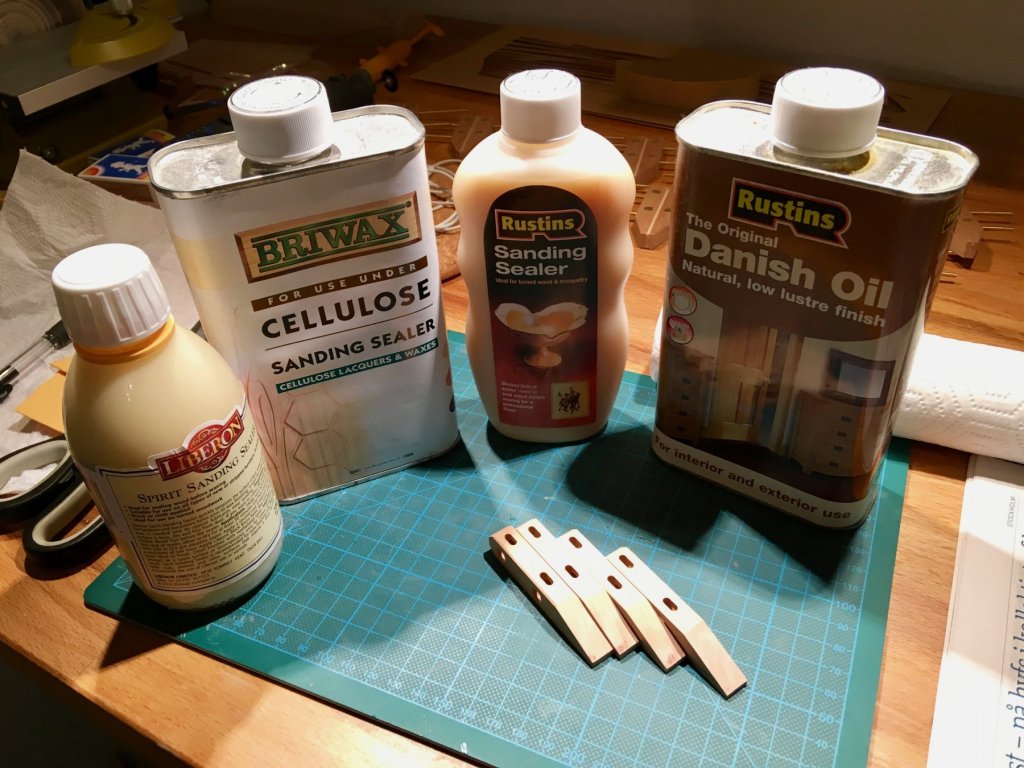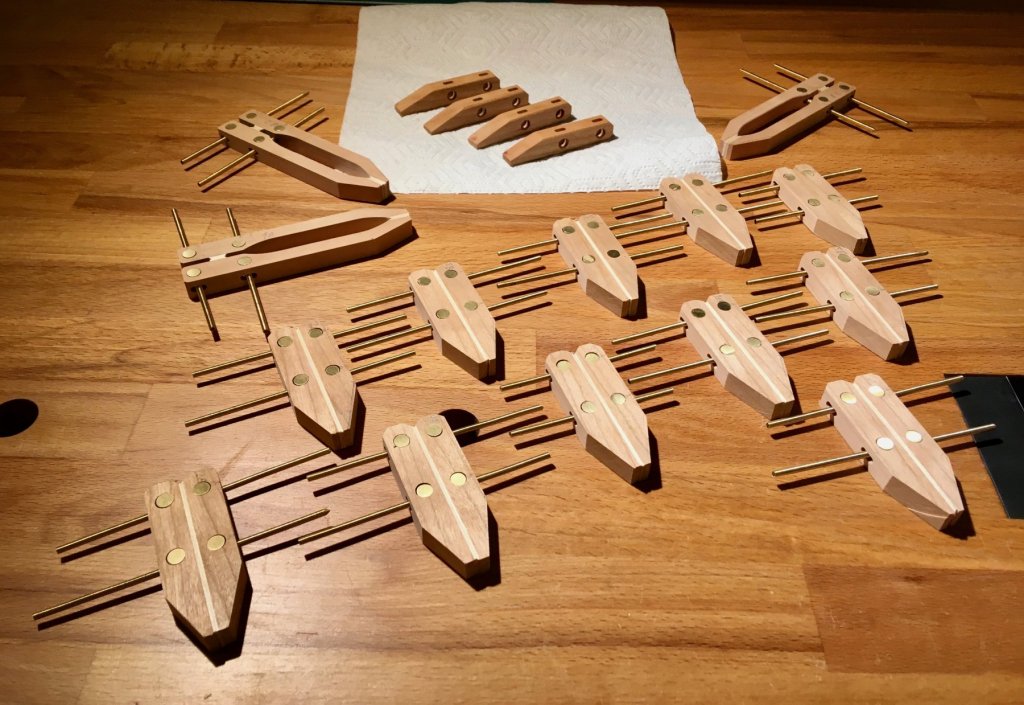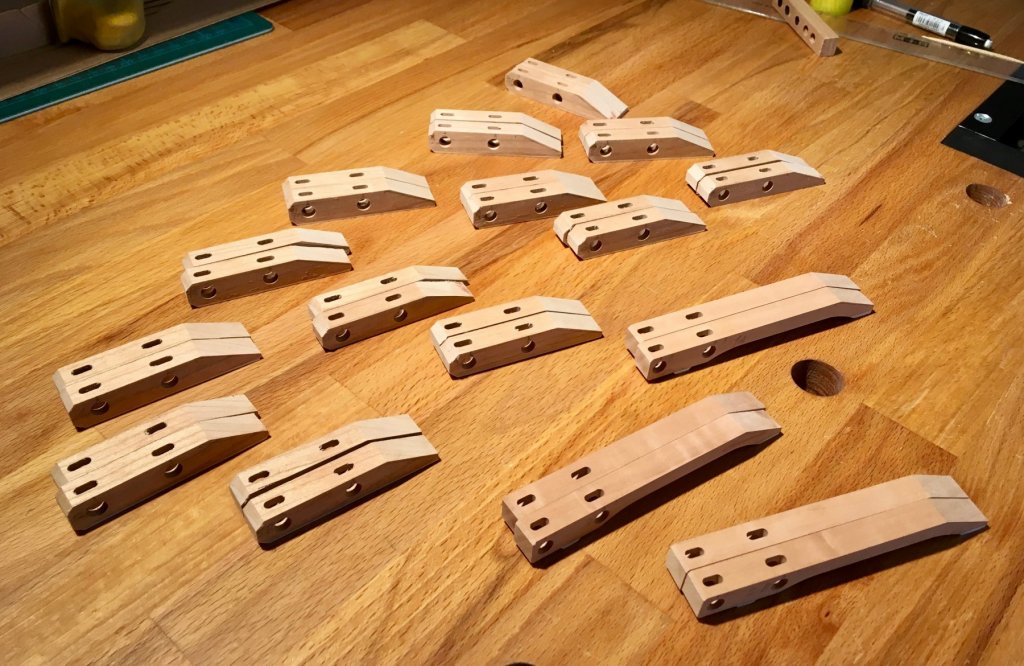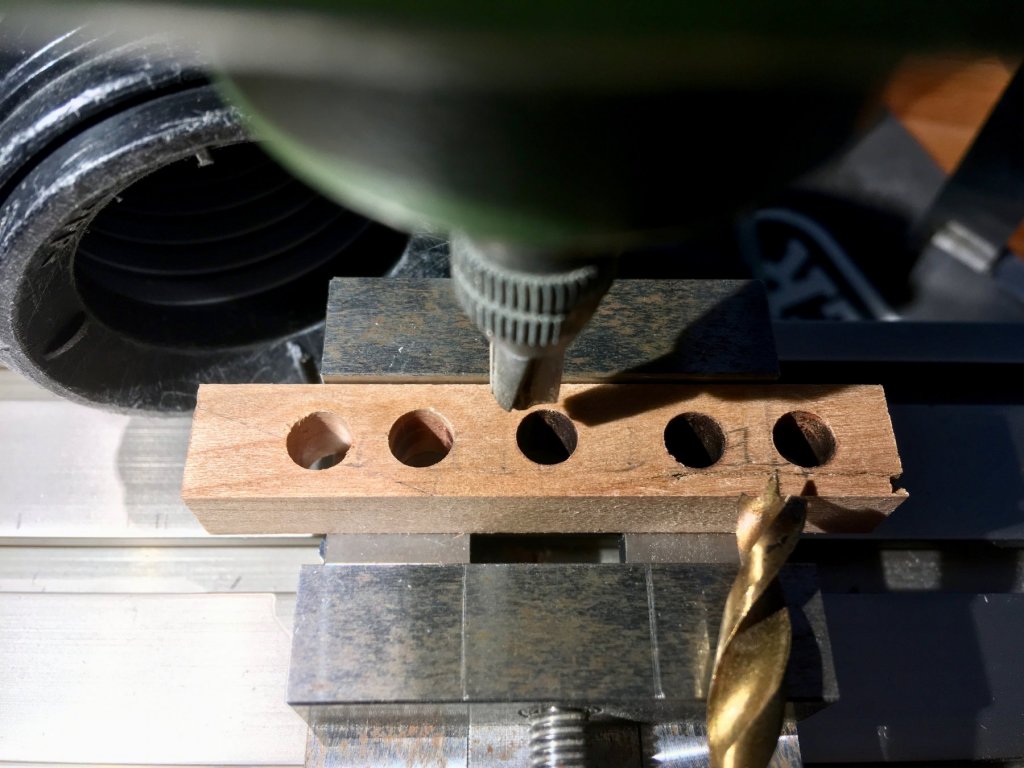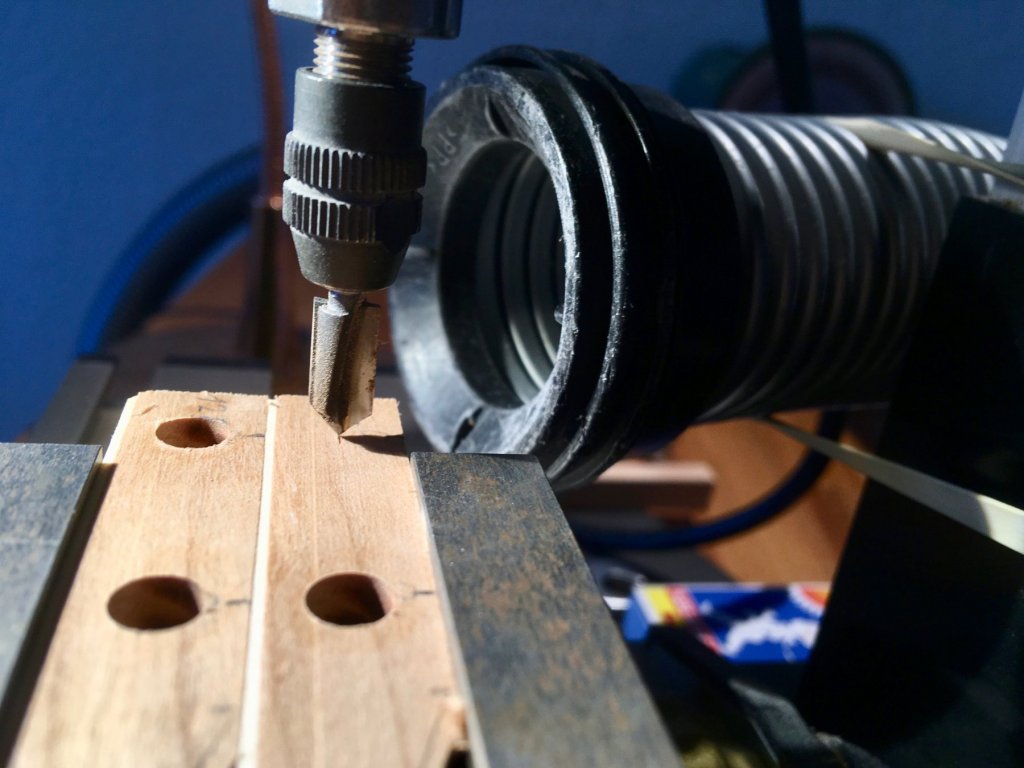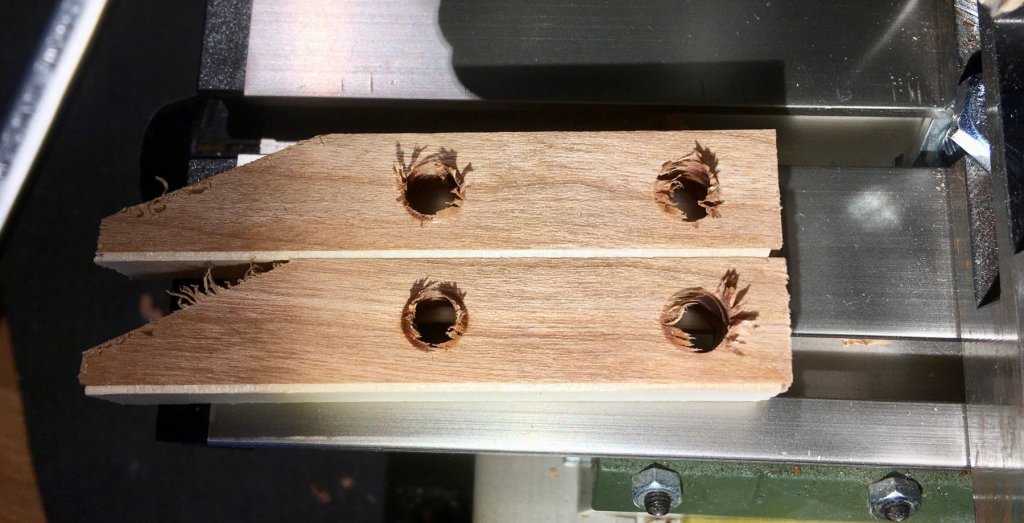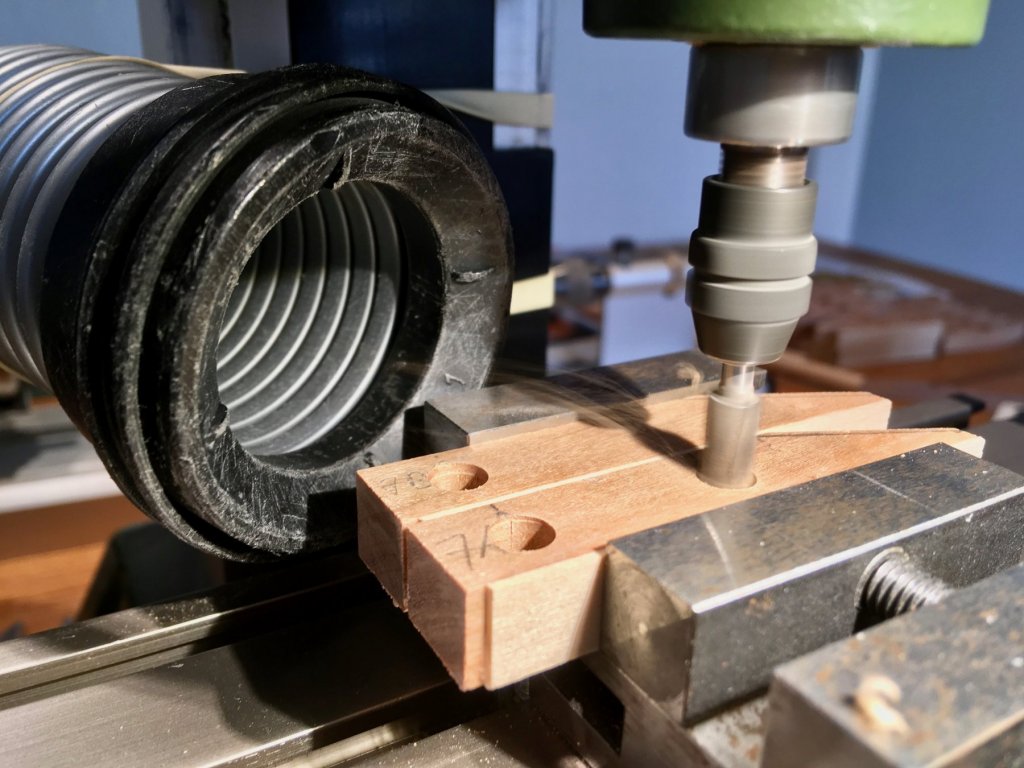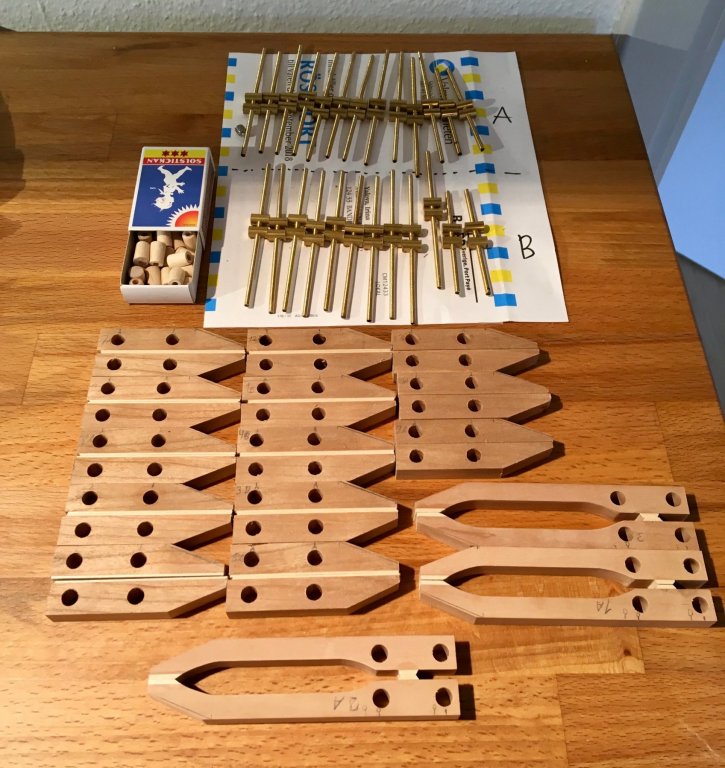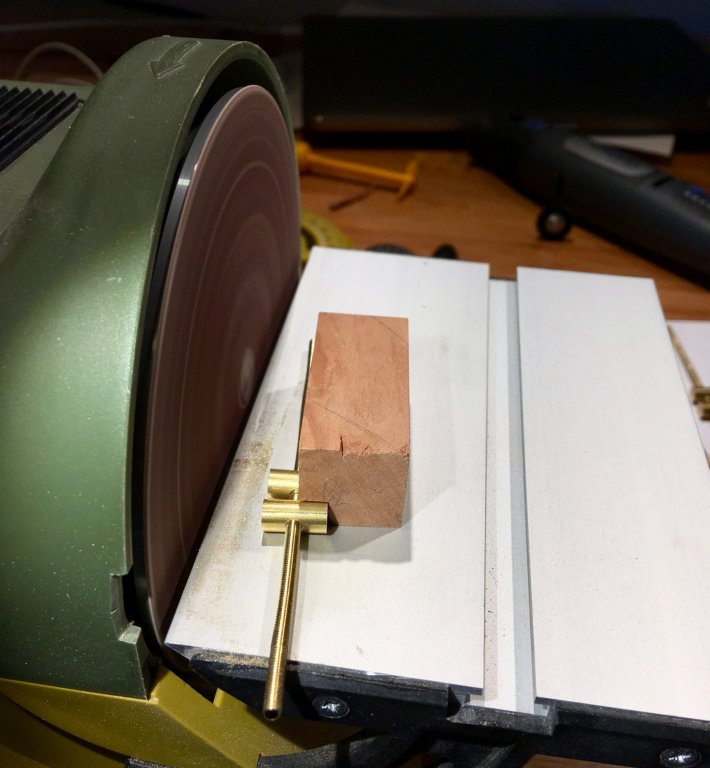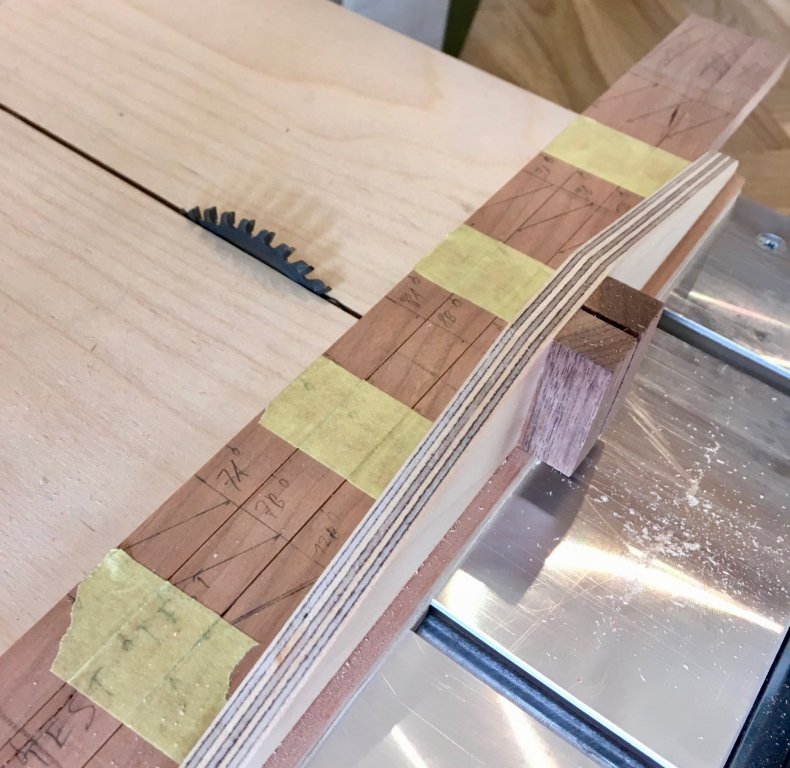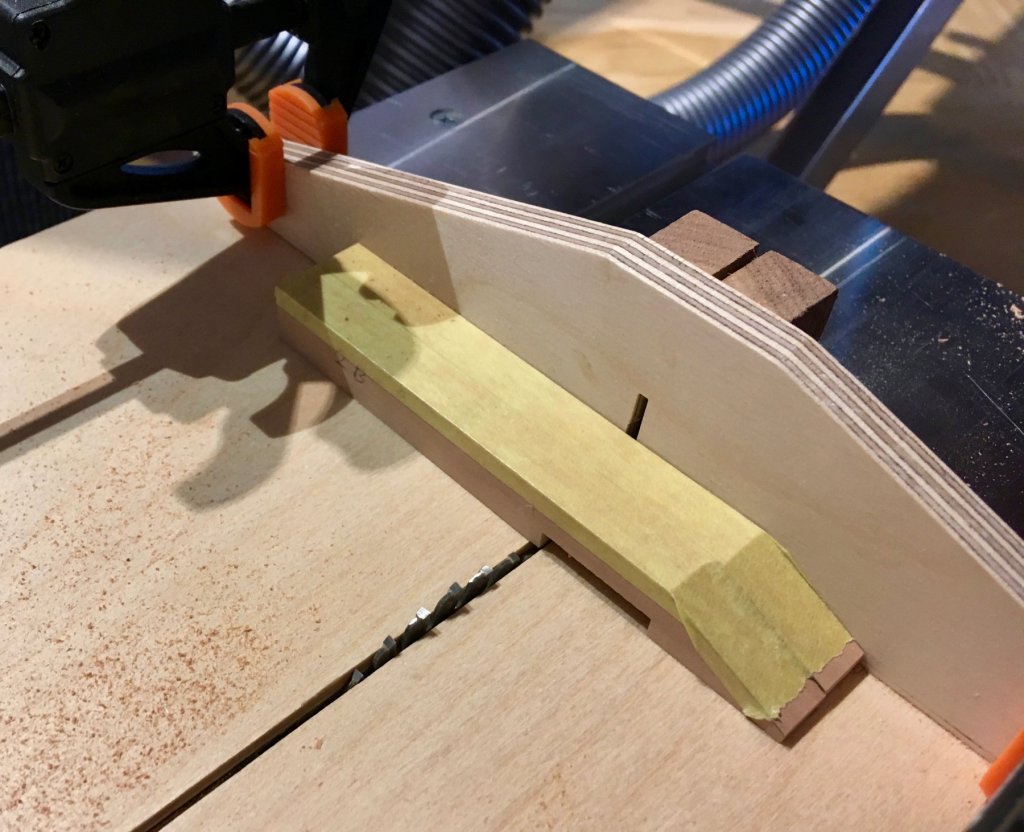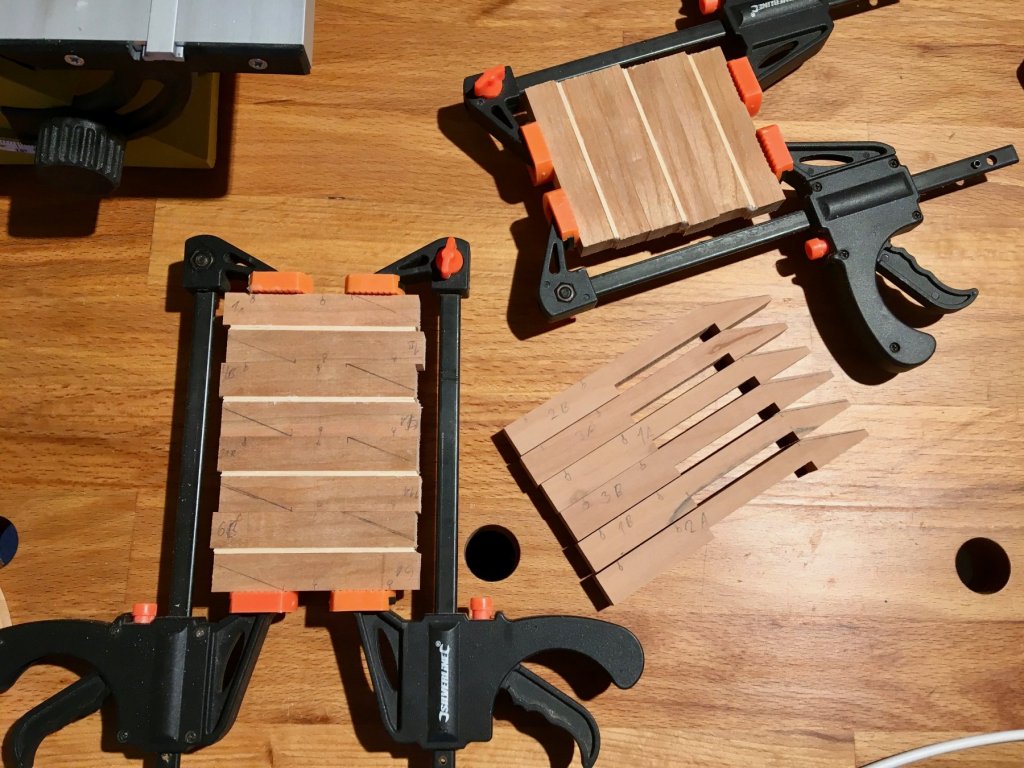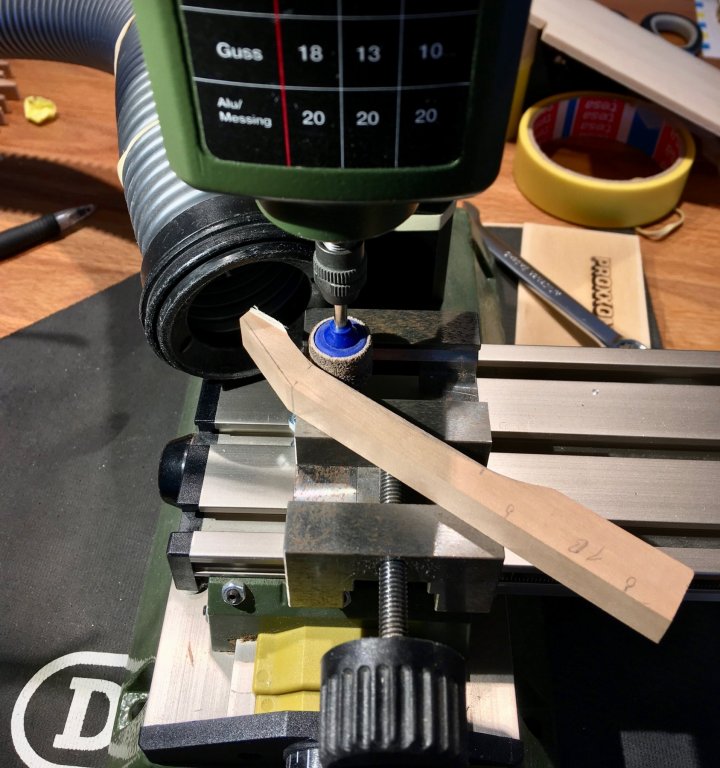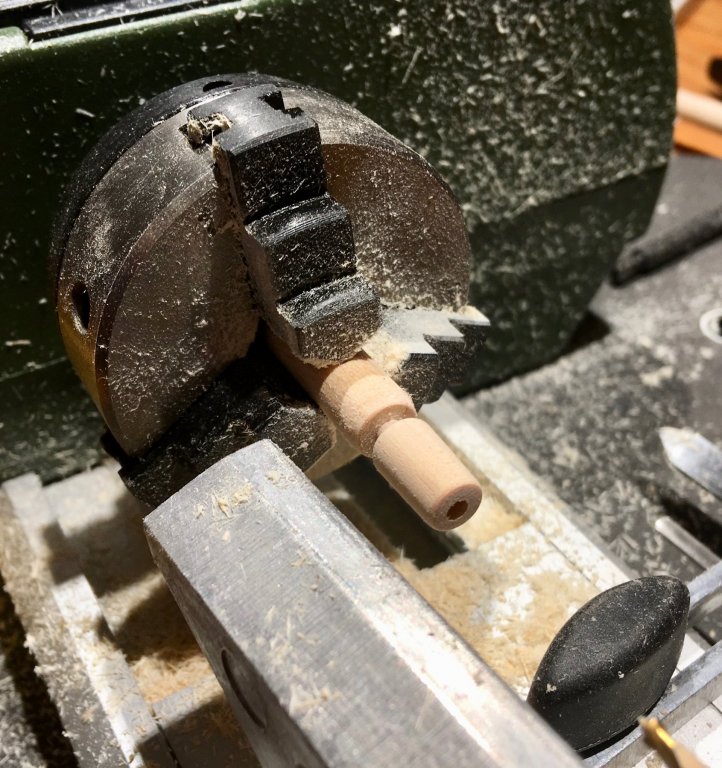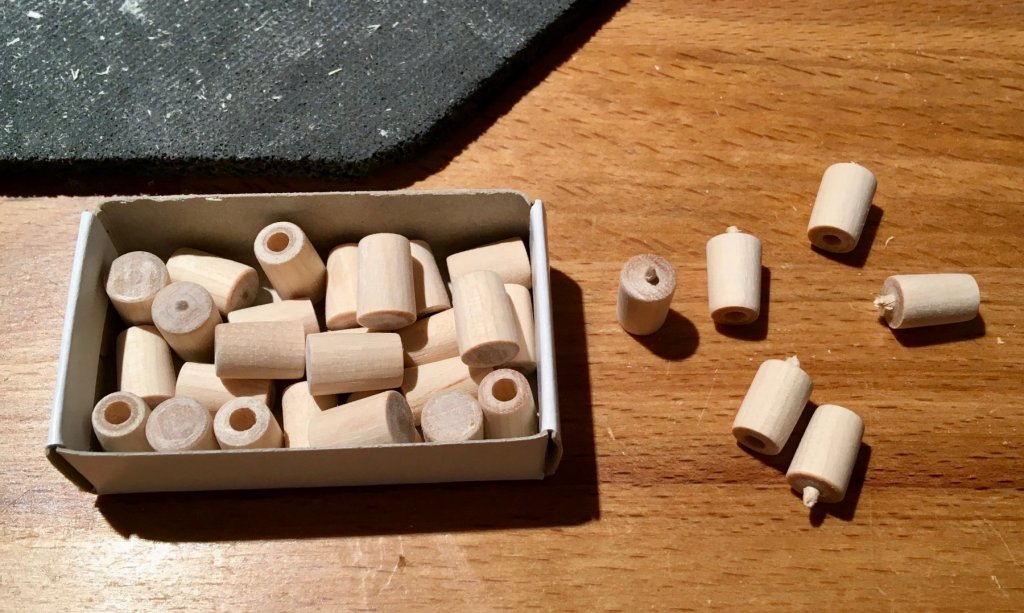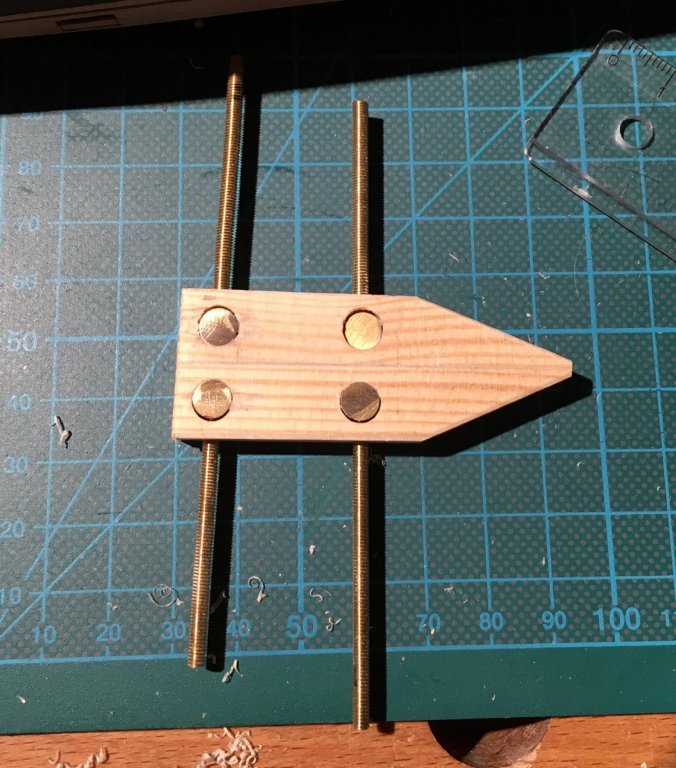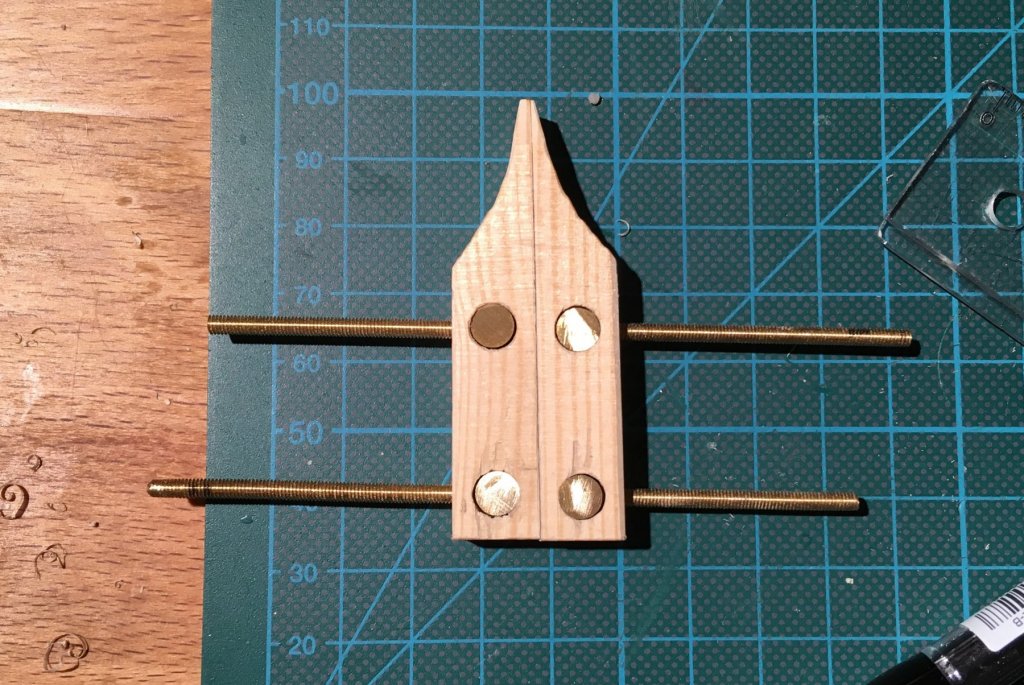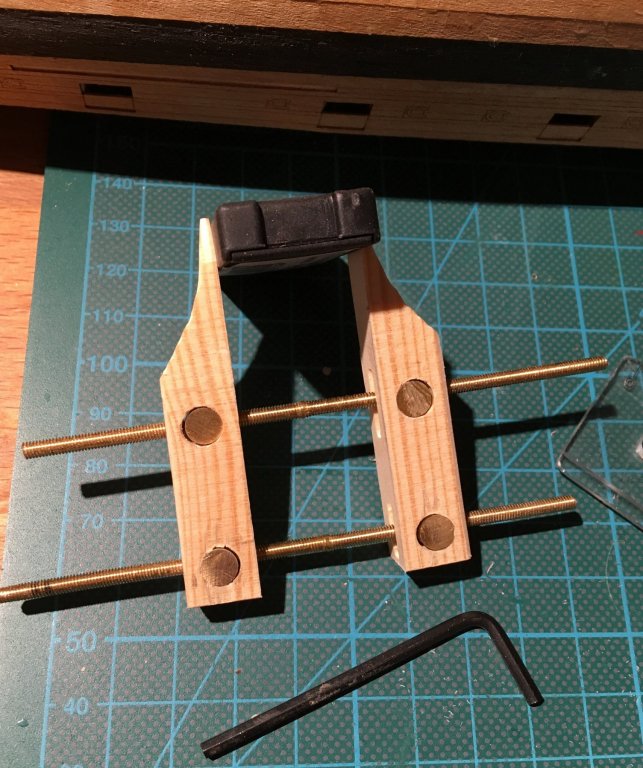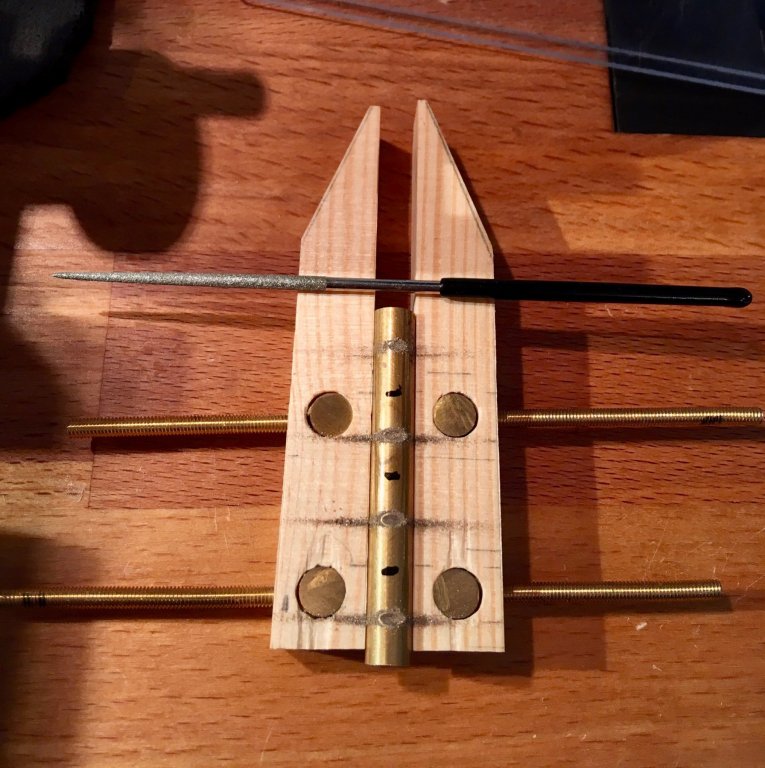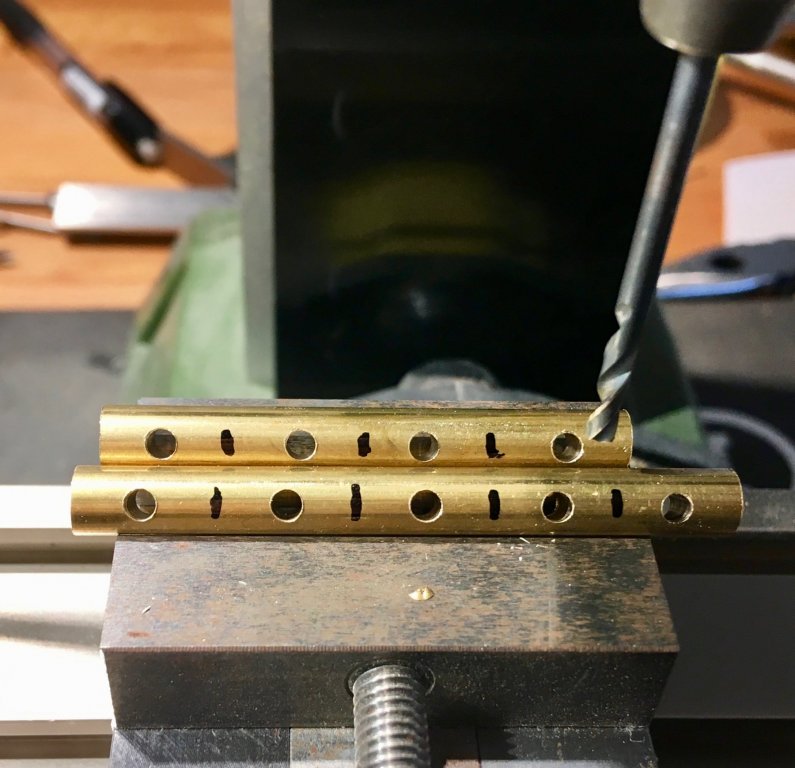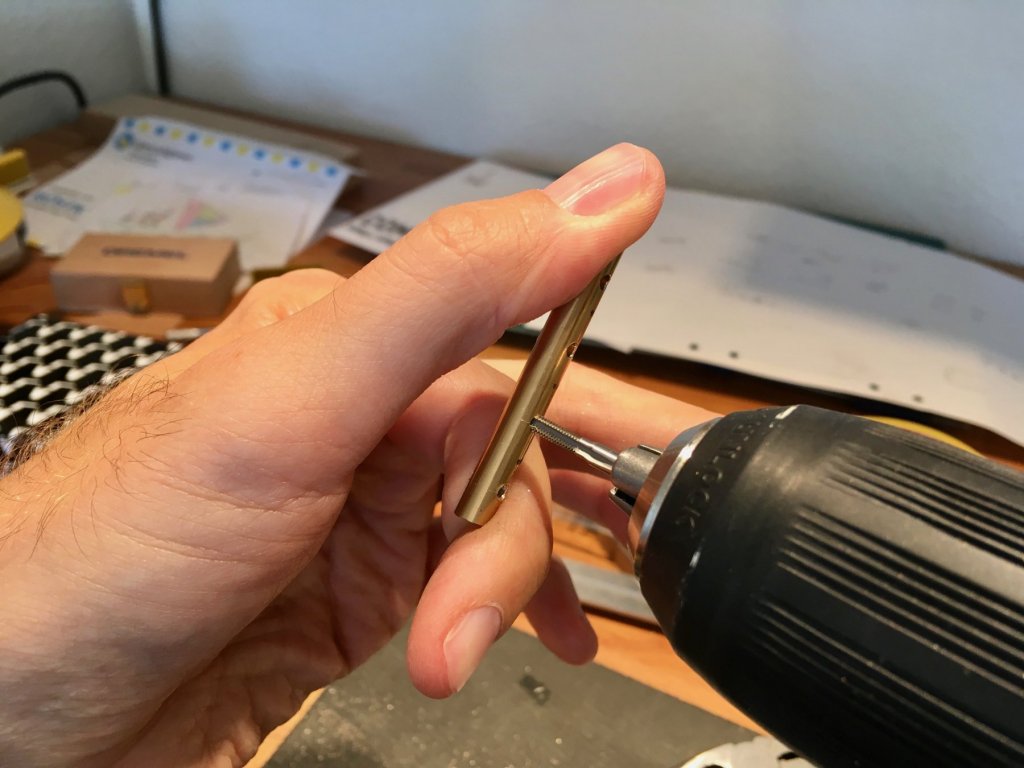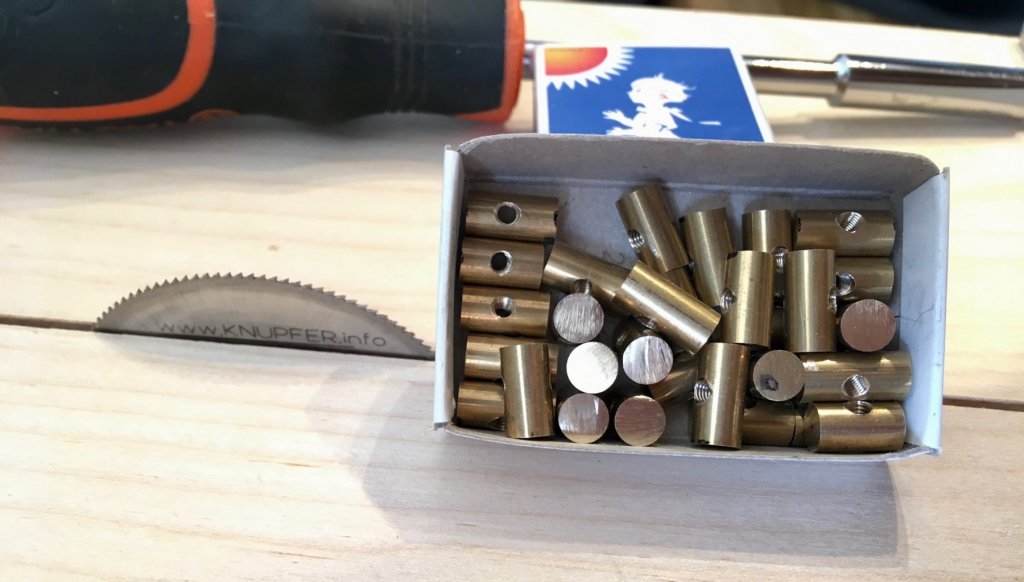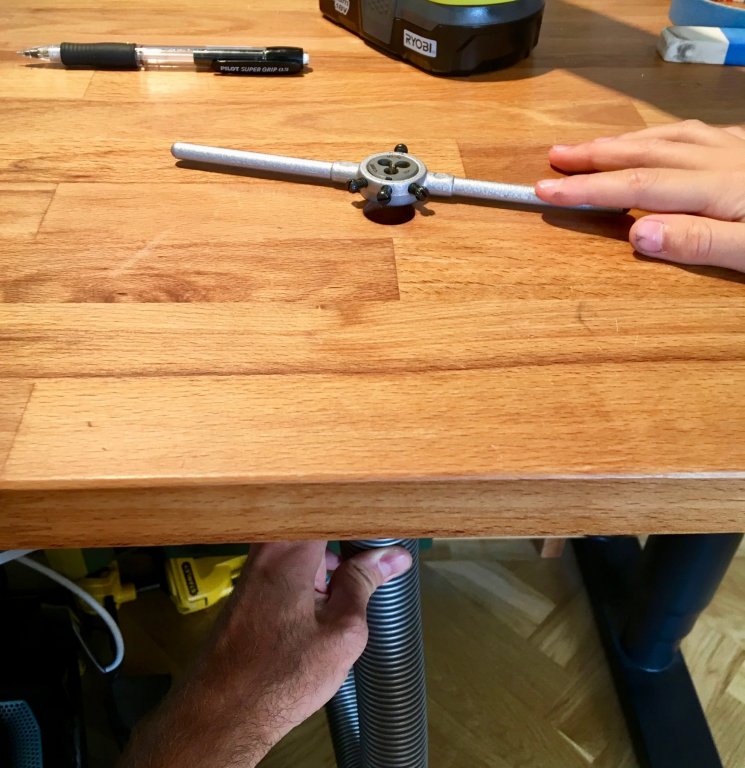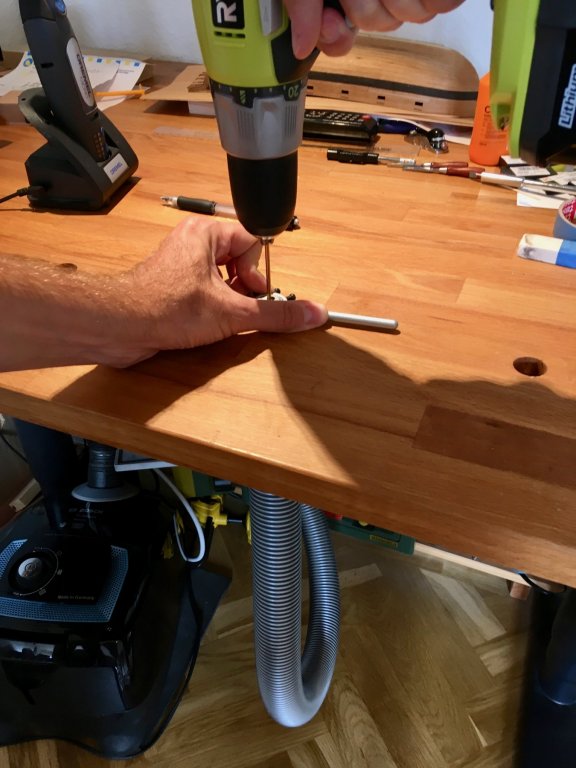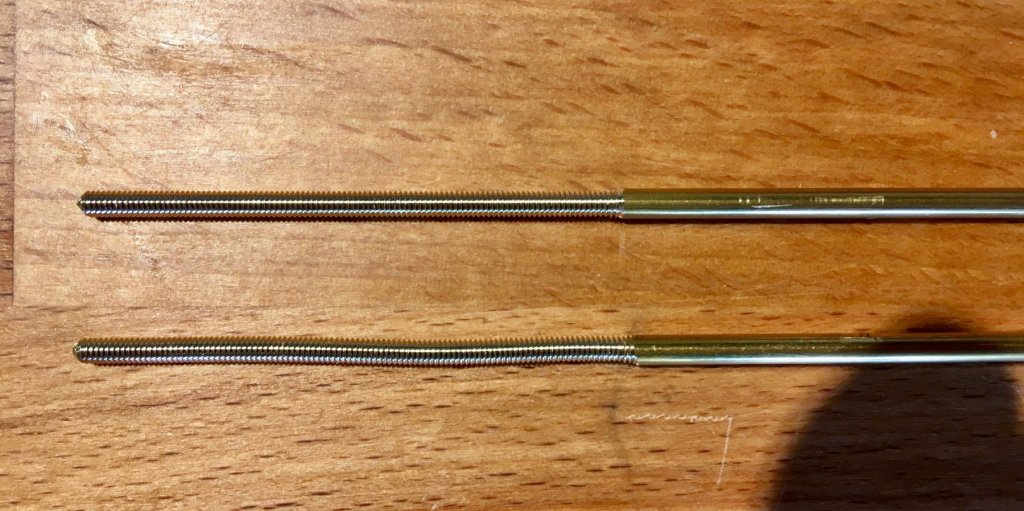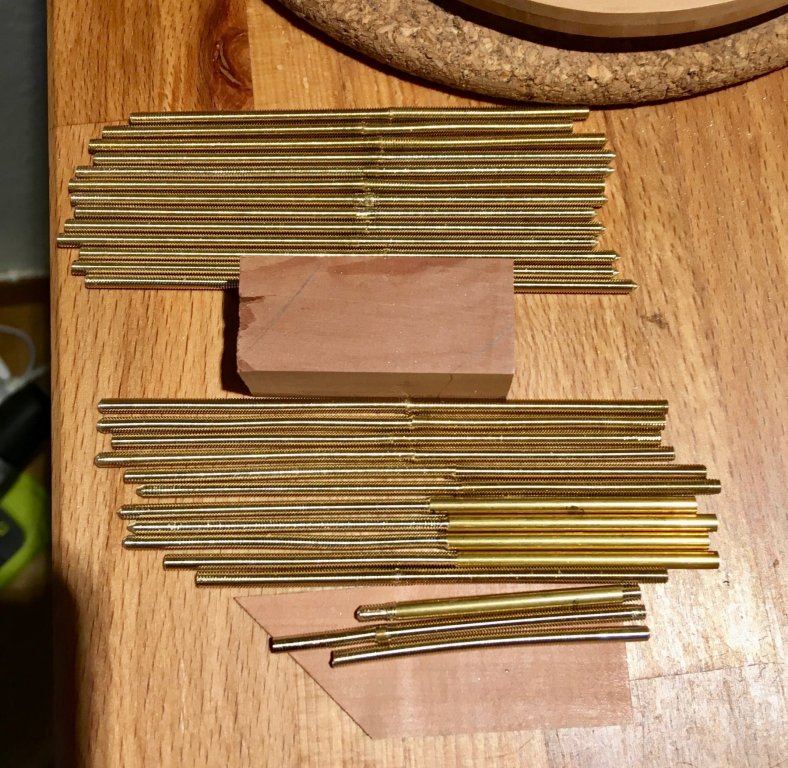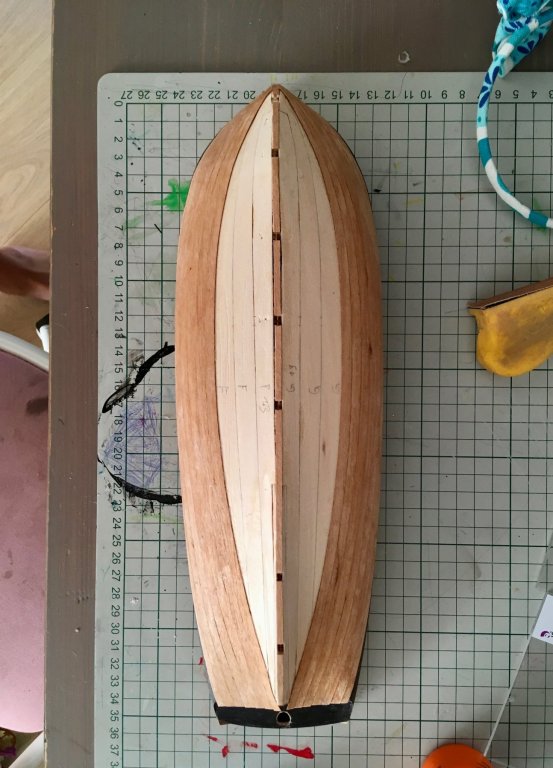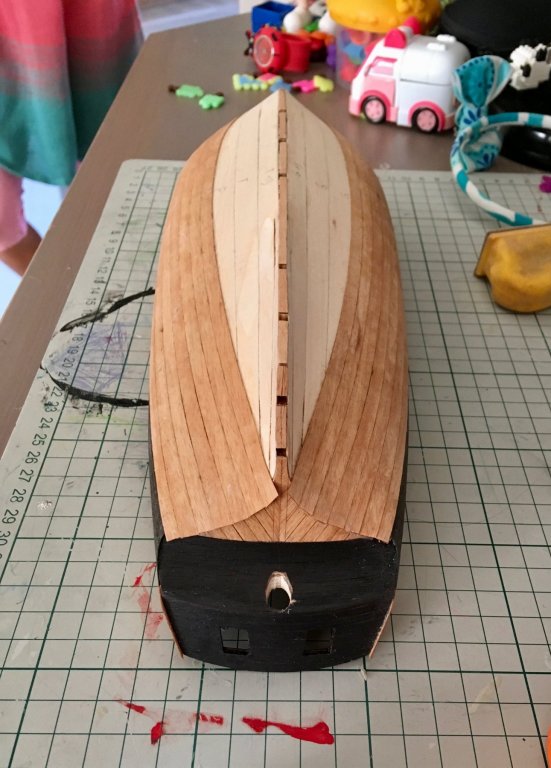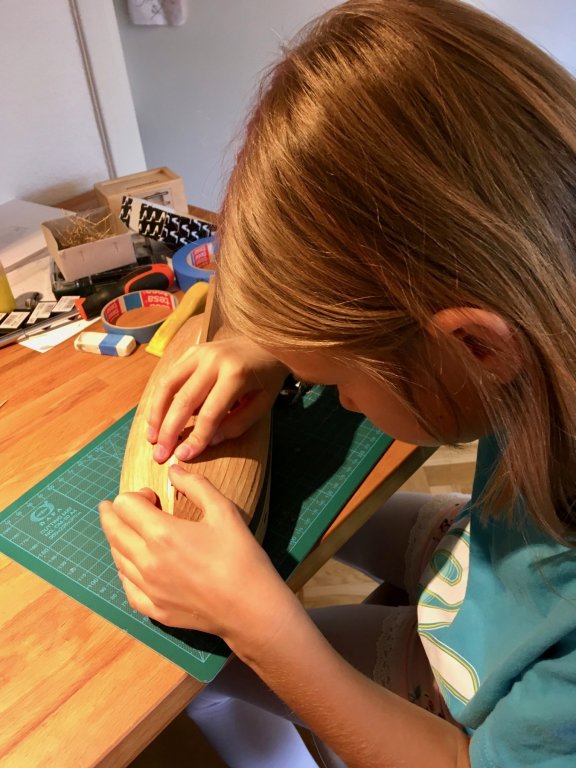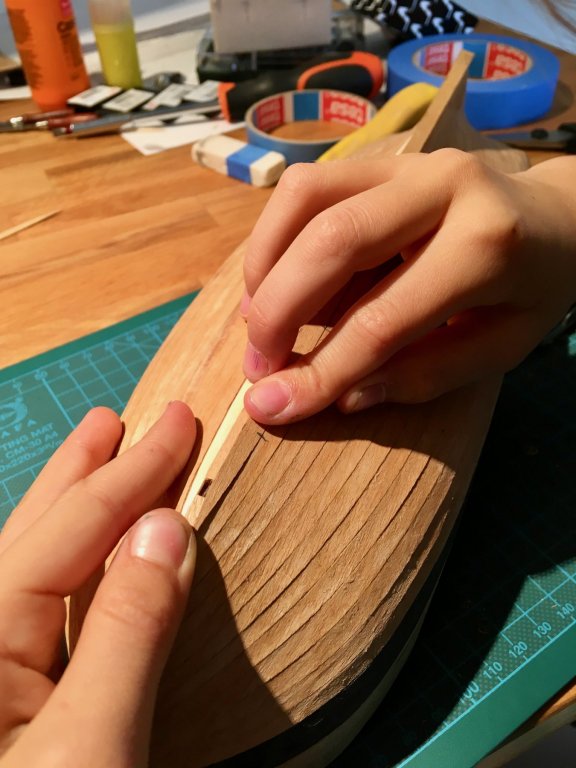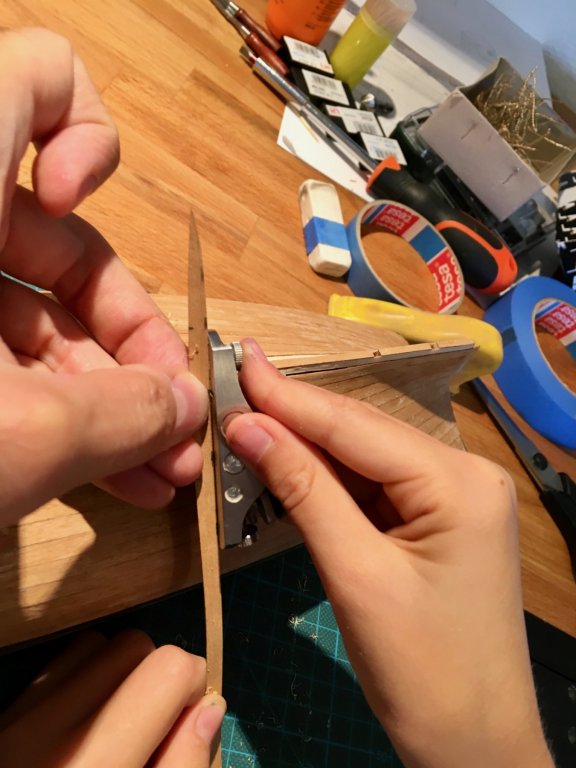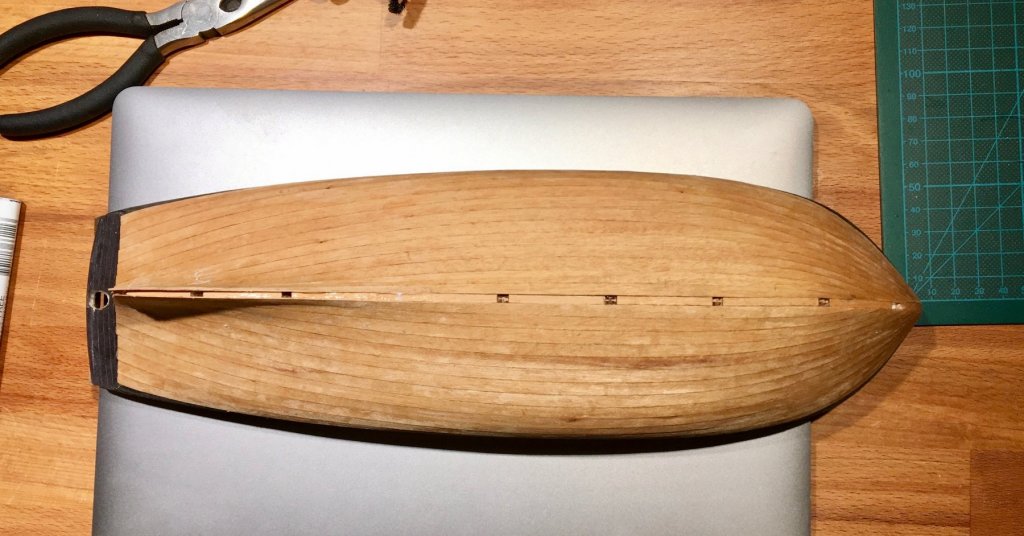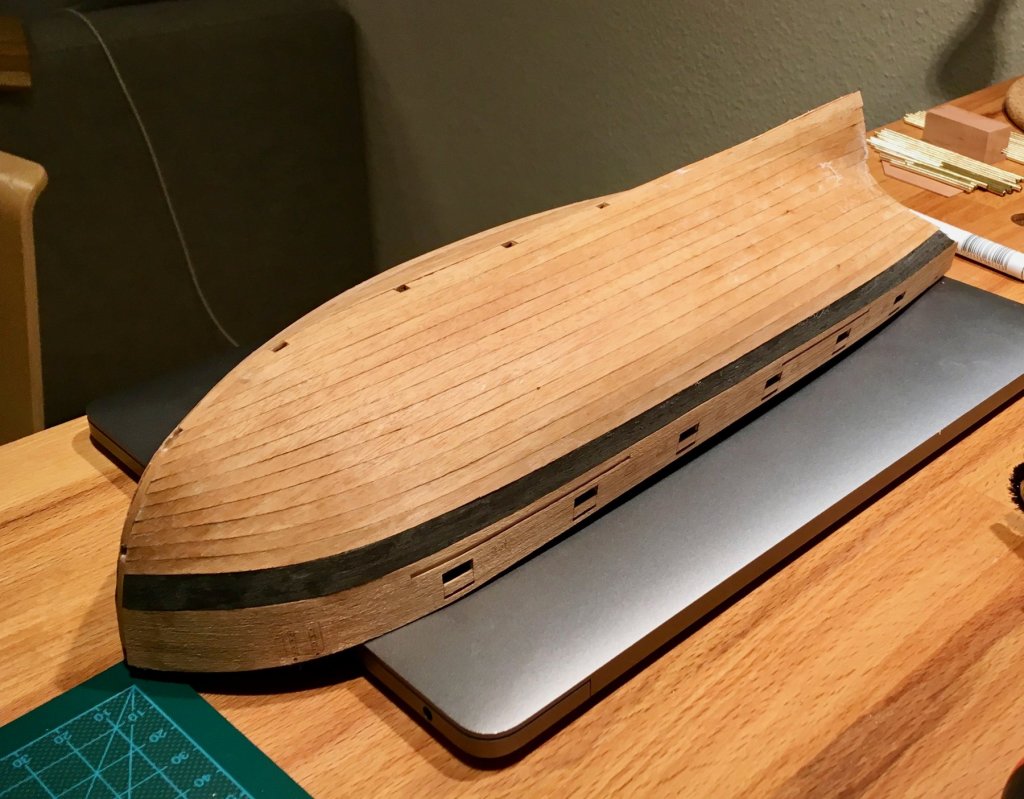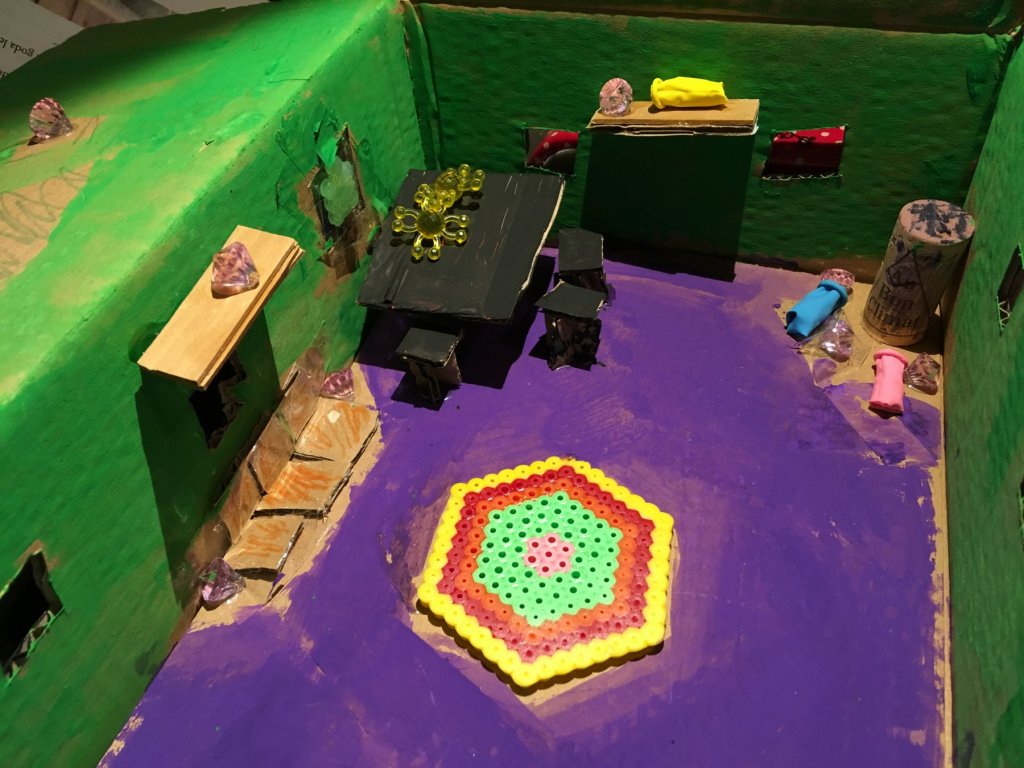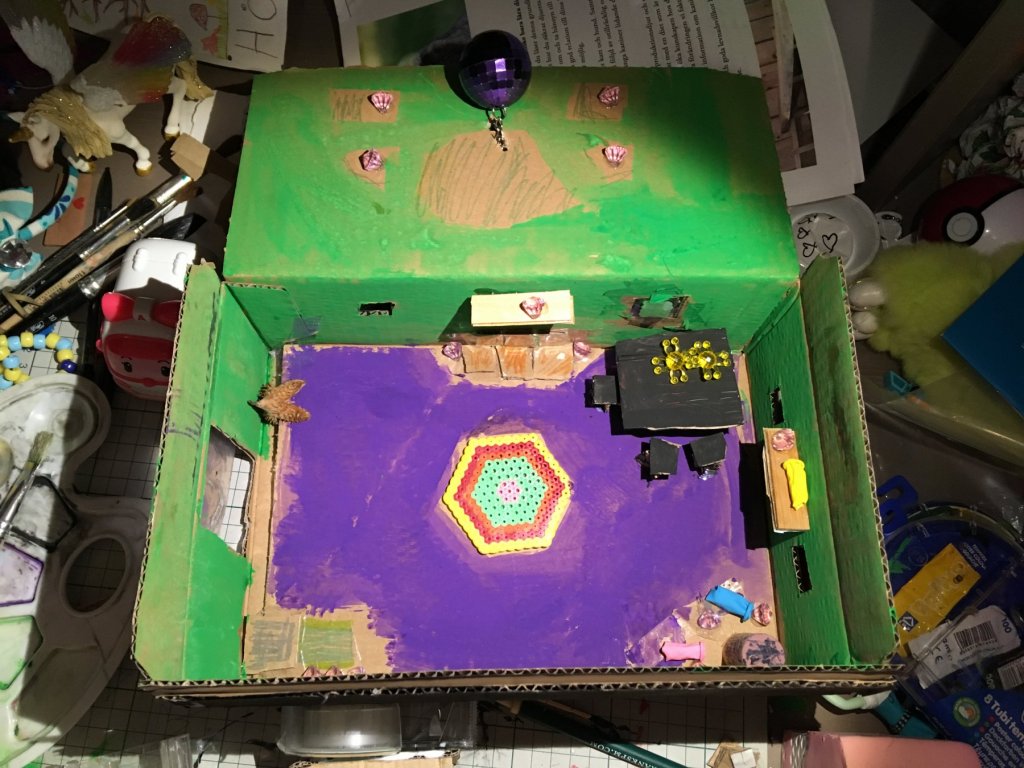-
Posts
1,543 -
Joined
-
Last visited
Content Type
Profiles
Forums
Gallery
Events
Everything posted by Mike Y
-
I had a pleasure to see Tiziano's model in person in Rochefort, it is truly amazing! Bravo! Was coming back to it over and over, there is something magnificent about it. It is made out of pear that Tiziano milled himself, and have a beautiful finish that is very unique. Very precise, there are no gaps and no cracks, even though the model is 17 years old... Spoilers: the real model is ahead of the build log by a number of years. Smart move! Tiziano was very kind to share his techniques. As usual, the main one is "go slow, do not rush"
-
I was impressed by the photos from previous French modelling festivals and decided to watch this page: http://5500.forumactif.org/f8-expositions-et-manifestations Seems like it is not in Rochefort every year, but it is the same active people from the French modelling forum who organise that events every now and then.
- 967 replies
-
- hahn
- oliver cromwell
-
(and 1 more)
Tagged with:
-
Hi Duff, Then both of us would be in a bad situation - not having enough clamps I am too scared of using sandpaper, since they will clamp finished parts. I already used soft basswood on another kinds of clamps that I used for deck clamps - it works like charm, compressing basswood fibers and leaving no traces on harder pear or boxwood. My clamps are basically ready, just need to glue in the handles with epoxy and make some final photos. They look pretty nice with the finish! I am currently in Rochefort, France, on the biggest ship modelling festival I ever saw: https://5500.forumactif.org/t3117-expo-a-rochefort-du-17-au-21-octobre-2018 100 models on display! Sneaky photo while everybody went out to enjoy some cocktails. Will post a proper photo album later, and hoping for People With Big Cameras to publish their photos as well. Met a number of people from MSW - Alex M with his Sphynx, Ricci with L'Amarante and Tiziano with his 74 gun ship. Pardon if I haven't recognised somebody! It was a unique opportunity to see a number of recently made models from some of the best people in this hobby. Apart from being in awe, I made a few interesting observations, also related to ageing of various materials, which is hard to see on your own model when it is new: Even the best craftsman have some whoopsies, gaps between planks and minor mistakes. Except Remco, I guess - he just tends to re-do everything until there are no mistakes And that small mistakes do not spoil an impression from some great models. So I should not worry too much about mistakes I made, that is very comforting! Would still try to avoid making more of them... Should be careful when simulating black caulking between the deck planks - quite a few models have that black colour leeching into the wood. Trying to darken the pear or age it is extremely tricky, if you do not want it to look smoked. Definitely calls for many many long experiments Brass treenails leave fine brass dust in pores of some woods, so one should think twice and experiment a lot before using them. They are quite common in the french modelling community, looks nice on a black ebony wales. Also, the glue that holds them might turn darker over time (or discolour the wood around the nail). Be careful there. I got that effect even when sanding clamps - they have brass rods, as soon as you start sanding with 400 grit or finer - brass dust gets into cherry and it's impossible to get it out, making cherry look dirty. Should be easier with pear though. Ebony shrinks a lot over time with humidity and temperature deviations, so most of that beautiful ebony wales and planking and headwork develop very visible cracks and gaps over time. Apparently this is pretty normal and well known, some fill that gaps with black epoxy, etc. Well, thanks, will definitely try dyed pear instead. Did not know that fact before. It is really hard to keep rigged models dust-free or clean them. On average, decks of "bare" models were much cleaner than rigged models. Rigging the model makes it very hard to look closer on deck fittings, structures inside the ship, etc. It is basically impossible, because a viewer is afraid of bumping into some mast or a boom, so need to keep quite a distance. It was much easier to explore the "bare" models. Mirror bases are interesting. There were few models displayed on a mirror, very easy to see the underside of the hull this way.
- 967 replies
-
- hahn
- oliver cromwell
-
(and 1 more)
Tagged with:
-
Had a pleasure to see the model in person in Rochefort, it is as fantastic as you would expect! Looking forward for more updates
-
It was just five years? Time flies! that is really quick for that kind of a project! Fantastic photos, and a very interesting marble base concept. It definitely looks nice!
- 1,449 replies
-
Finally POF from you! Let me hop for a long and interesting journey
- 589 replies
-
- le gros ventre
- cargo
-
(and 1 more)
Tagged with:
-
Dremel rotary tool - which one?
Mike Y replied to RPaul's topic in Modeling tools and Workshop Equipment
Dremel 8050 is very nice, I use it almost exclusively, unless more power is necessary. Very good balance and no wires. The battery lasts for a while. Would definitely recommend it! Proxxon also released some battery tool, but it is much bigger and bulkier. Frankly, can't remember last time I needed a lot of power from the tool when modelling, the bigger non-battery dremel just collects dust for now. It might be useful for all-round housework, gardening and other heavy duty tasks. -
That is exactly why I am scared of not applying the finish for things that are touched, the "natural finish" you described sounds very gross But it might work for delicate parts of the model that are not supposed to be touched (beams / carlings / ledges / knees / fittings / etc). Patina will form on the wood over time, and it will look nicer. Will run some experiments later.
- 967 replies
-
- hahn
- oliver cromwell
-
(and 1 more)
Tagged with:
-
Yes, I can see the appeal - you make a few small "models", put some attention into the details and design - but also have a functional aspect to consider, and you end up with a model that could be used as a tool!
- 967 replies
-
- hahn
- oliver cromwell
-
(and 1 more)
Tagged with:
-
Thanks Paul, will try it! I am still yet to try the sanding sealers on Pear, need to prepare proper test pieces with various kinds of grain. Want to switch from oil on a model to have something that looks closer to an unfinished color of the pear. Or maybe finally stop using finish whatsoever, will see.
- 967 replies
-
- hahn
- oliver cromwell
-
(and 1 more)
Tagged with:
-
Sanding sealer test results are quite surprising. On cherry, there is no visible difference between any of them and Danish Oil (while there is a clear difference on Pear). However, the surface smoothness is different, especially on endgrain or diagonal grain. Rustins and Liberon are rough and look blotchy on a photo, while Briwax cellulose leaves a smooth and even finish, though a bit too glossy for my taste. Danish oil is slightly less smooth. Decided to go with oil since I am more used to it, and these clamps are tricky to finish (a lot of surfaces, narrow areas between the metal rods, and I do not want the finish to cause any buildup where the metal cylinders go). From left to right: Liberon, Rustins, Briwax, Danish Oil: Each clamp got a nice chamfers on all edges, primarily with a block plane and a file on a crossgrain: Half of the regular shorter clamps got that narrow tips. Simple radius looks good enough: Drum sander leaves marks on cherry, so it needs some satisfying sanding time to make it smooth and beautiful: So all short clamps are waiting for their turn to have their sides sanded. It is tedious, and brass particles get stuck in a wood, requiting some scraping afterwards to remove them. Hope it would be less of a problem for cherry. While the longer clamps are ready, and just need to get their handles (which requires to mix a batch of epoxy, so I will do it later for all clamps in the same batch):
- 967 replies
-
- hahn
- oliver cromwell
-
(and 1 more)
Tagged with:
-
Assembly phase is very relaxing and could be easily combined with a nice music and some fine tea. No dust, no noise - perfect evening! Experimenting with finishes. I had few extra clamps as a reserve for whoopsies, ending up with no whoopsies - so using them to test the finishes. So far they all look the same when applied, but a pretty different characteristics during an application process. Will see how they look once dry. Result of the weekend: Now they just need some final shaping, handles, sanding and finishing.
- 967 replies
-
- hahn
- oliver cromwell
-
(and 1 more)
Tagged with:
-
Some finish would be nice - will show that bookmatched cherry grain and protect from fingerprints. It is a tool that supposed to be touched Was thinking about cork, but all the cork sheets I saw were out of scale for those tiny clamps. It really feels like making a scale model of a real thing.
- 967 replies
-
- hahn
- oliver cromwell
-
(and 1 more)
Tagged with:
-
Thanks for the compliments! Clamps got their butts rounded and slots cut: So now it's juts a matter of sanding, assembly, breaking the edges, more sanding and applying some finish. Some oil would be great, but I do not want it on a basswood contact surface (they will act like a sponge and, when pressured, release oil into the model parts). So it would be probably some kind of less penetrating finish. I have three bottles of various sanding sealers to play with!
- 967 replies
-
- hahn
- oliver cromwell
-
(and 1 more)
Tagged with:
-
... And this is the moment when I would really love to have a CNC mill - for repetitive and precise tasks... Ok, even a regular mill is better than trying to do it by hand Surprisingly, drilling with a mill bit works better than with a wood drill bit. No idea why, maybe the speed is too high for a drill bit. It causes burning and some chip-out on the back side of the hole, while a milling bit just pushes fibers outside without causing them to chip out. The fuzzy fibers are easily cleaned up later with a knife. Mill is pretty amazing for the precise work, I really love the control and having everything square in all directions! Current state of things. The wisdom says that you can never have too many clamps, challenge accepted!
- 967 replies
-
- hahn
- oliver cromwell
-
(and 1 more)
Tagged with:
-
Who could have known that making clamps will take so much time But I hope it worth it! Sanding that metal pieces to ensure uniform length. A simple jig prevents them from tipping over when in contact with the sandpaper. Cutting clamps, this is mostly cherry: Also made three pairs of long clamps, specialised for things like wales. To make it easier to clamp around hull shape, they will have a gap in the center: Gluing soft basswood strips that would help to prevent damage of a pieces being clamped: Mill as a drum sander, works fine: Big Clamp help to make a tiny version of itself Experimented with various shapes of handles, the most elegant and simplest to manufacture is just a smoothened slightly conical cylinder:
- 967 replies
-
- hahn
- oliver cromwell
-
(and 1 more)
Tagged with:
-
Very accurate and methodical process, thanks for all that "in progress" pics. A bit of a pity that part of the result is painted on top. Love the ribbon and letter carvings!
- 487 replies
-
- ship of the line
- 80 guns
-
(and 1 more)
Tagged with:
-
Regarding treenail installation - isn't it easier to drill and install them while the hull is still attached to the base upside-down, before it is sanded and before the frames are cut off from the build base? Or I miss some problem with it? Otherwise it would be easy to scratch that nice and delicate hull while drilling treenail holes... Just a thought.
- 421 replies
-
- medway longboat
- Syren Ship Model Company
-
(and 1 more)
Tagged with:
-
Thanks Gaetan and Toni, will go with a slimmed / curved shape. Strength should not really be a problem, if you need a lot of clamping force on a model - I think it is a sign of a bigger problem. Applying too much force will just cause more troubles... So it is more about heaving a light, soft and miniature clamps. The metal ones are too heavy (I have them as well) and will leave marks in the wood with their jaws. The wooden ones would be lined with a super soft basswood to prevent any damage. I finally finished all the thread cutting and tapping (phew!), so hope to start cutting some wood tomorrow!
- 967 replies
-
- hahn
- oliver cromwell
-
(and 1 more)
Tagged with:
-
Experimenting with clamp shapes (on scap pieces, real clamps would be made out of pear). The shorter version looks better (needs a bit more meat on the back side though): But it should more practical if I taper the jaws: That would allow to grip in narrow places (between frames, carlings/ledges, etc). I was worried about them flexing too much, but it is not an issue even on a soft pine that I use for this prototype. The clamping force on the very end is more than enough for all modelling applications. I could not clamp it hard enough to get any flex. The only downside - it looks kind of ugly. On the upside, I can make a lot of dad jokes about a clamp that looks like a duck, walks like a duck and quacks like a duck Any opinions? What clamp shape is more practical based on your experience?
- 967 replies
-
- hahn
- oliver cromwell
-
(and 1 more)
Tagged with:
-
Congratulations! It is incredible, and it is very handy that you can actually see both sides with a mirror! It was a pleasure to follow the journey, looking forward to the next one. There is still some place left in your display wall
- 1,449 replies
-
This summer I had a perfect plan - send off the family to their parent/grandparents in July, and enjoy the hobby in the evenings. "Ha ha oh come on" said my work life, and I ended up with a series of business trips instead Some of them were good though, can't complain. I am still making the "Tosti-style" clamps. Drilling the holes on a mill: To prevent the drill bit from slipping to the side of the rod - I flatten it with a file first: That method is simple and works well enough. Thread is tapped manually, no problems with that approach: Then slicing this rod with a Knupfer slitting blade. It is really great, cuts brass like butter, I am impressed! Cutting the thread in a thin (3mm) rod is trickier though. Frequently the thread is being cut off-center, resulting in a wobble closer to the center of the rod. Googled a bit, most common reasons are incorrect angle, uneven feed, etc. I found a method that works well in the end. Die is placed on top of the benchdog hole, vaccuum is placed below it, and everything is held in place purely with a vaccuum. In action: Being on a flat surface, it is easy to control the angle and is easy to apply a steady pressure. As a bonus, air flow immediately cools both die and rod, and all chips are sucked into the vac. The end result is a clean and straight rod (on top), versus wobbly alternative (the same die was used for both rods): I am nearly done with metalwork, but now my left-handed die died (no pun intended), it cuts a larger radius and gets a lot of resistance - I broke two rods when trying to cut that thread Ordered a new die, will cut the clamp jaws in a meanwhile. P.S.: machining is, actually, quite hard! You can't sand away the excess or cover gaps with sawdust and glue mixture. There is only one chance to do things right.
- 967 replies
-
- hahn
- oliver cromwell
-
(and 1 more)
Tagged with:
-
Dutchman, can't find your Polotsk build log, time to start one? Daria is back from grandparents, back to the build. The hull is sloooowly closing up, teaching a lesson or two about persistence, patience and planning. Here is final one, garboard plank. It is tricker, because it needs to be fine fitted carefully to the "keel". All the other planks do not require any fine fitting, except the front tip that meets the stem. Fine fitting was a nice exercise, with a dozen of dry-fits for each plank on a way there. But Daria managed to do it in one session, without getting tired. That made me really proud! Fine fitting with a plane (two-man job so far): In parallel, she was assembling a furniture for her cardboard-and-fantasy-made fairy house I am completely not involved, totally her design and implementation, she just casually walk to me to get some tool or glue. Getting quite comfortable with a scalpel, btw (used it to cut some windows). It is still in progress, she is making some furniture (gluing a book shelf out of cardboard strips in multiple iterations, which warms my heart). She already starts talking about making a fairy house out of wood, and hints that I have just the right tools for that and plenty of spare plywood 😎 Back to the model - a milestone is achieved, the last plank is in place! Now she will remove all glue spots with a Dremel nylon bristle brush, trim plank ends and sand it smooth. Daria is super happy about the milestone and asks me to post it to the log asap
About us
Modelshipworld - Advancing Ship Modeling through Research
SSL Secured
Your security is important for us so this Website is SSL-Secured
NRG Mailing Address
Nautical Research Guild
237 South Lincoln Street
Westmont IL, 60559-1917
Model Ship World ® and the MSW logo are Registered Trademarks, and belong to the Nautical Research Guild (United States Patent and Trademark Office: No. 6,929,264 & No. 6,929,274, registered Dec. 20, 2022)
Helpful Links
About the NRG
If you enjoy building ship models that are historically accurate as well as beautiful, then The Nautical Research Guild (NRG) is just right for you.
The Guild is a non-profit educational organization whose mission is to “Advance Ship Modeling Through Research”. We provide support to our members in their efforts to raise the quality of their model ships.
The Nautical Research Guild has published our world-renowned quarterly magazine, The Nautical Research Journal, since 1955. The pages of the Journal are full of articles by accomplished ship modelers who show you how they create those exquisite details on their models, and by maritime historians who show you the correct details to build. The Journal is available in both print and digital editions. Go to the NRG web site (www.thenrg.org) to download a complimentary digital copy of the Journal. The NRG also publishes plan sets, books and compilations of back issues of the Journal and the former Ships in Scale and Model Ship Builder magazines.




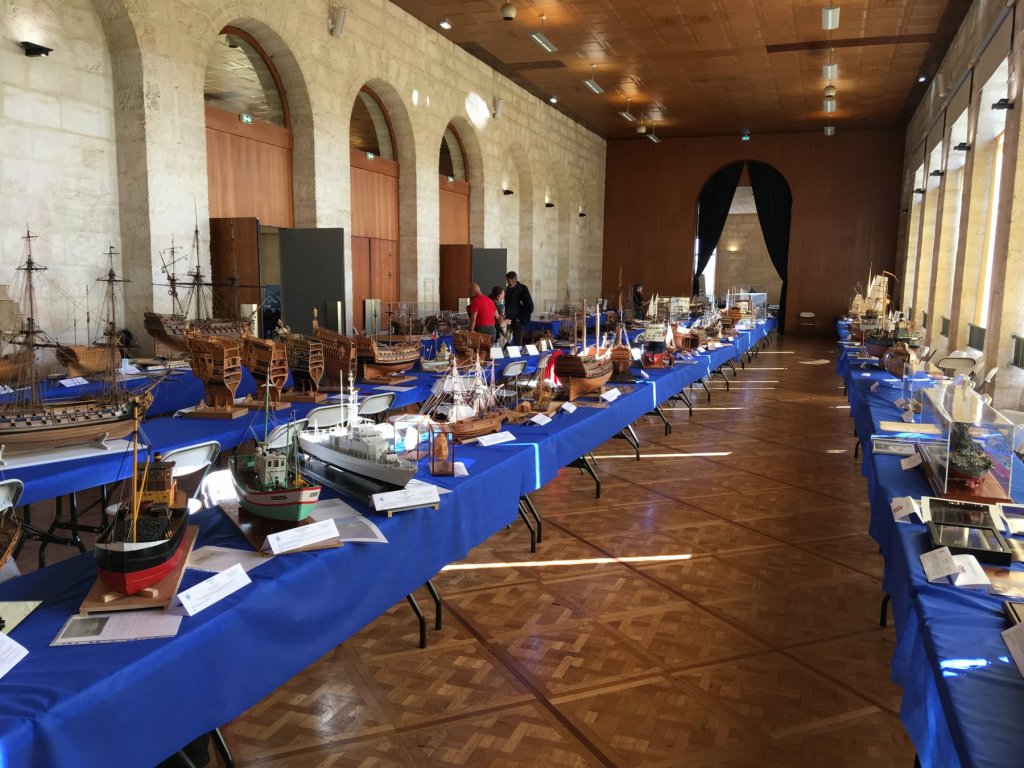
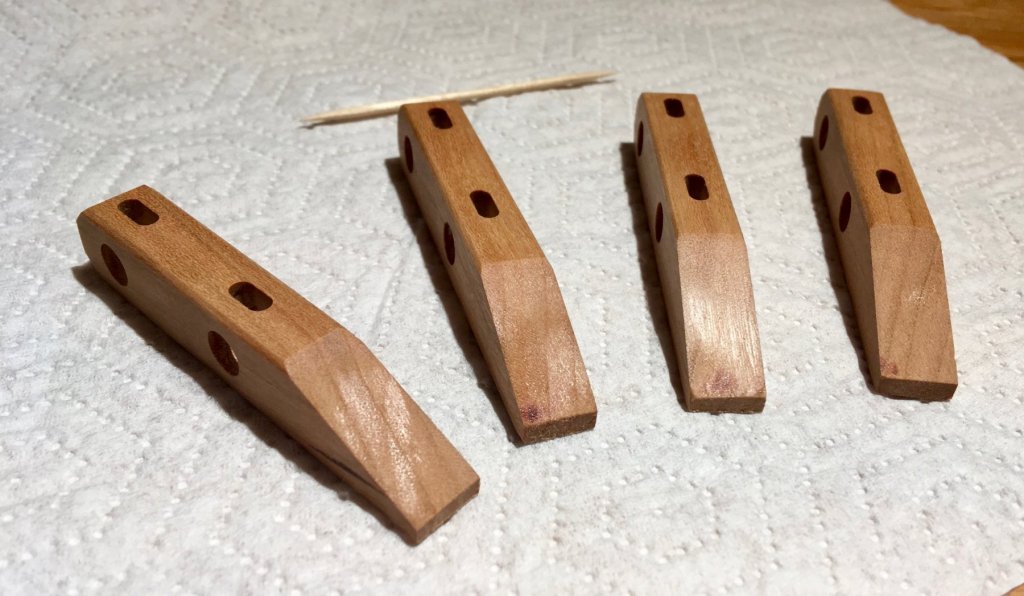
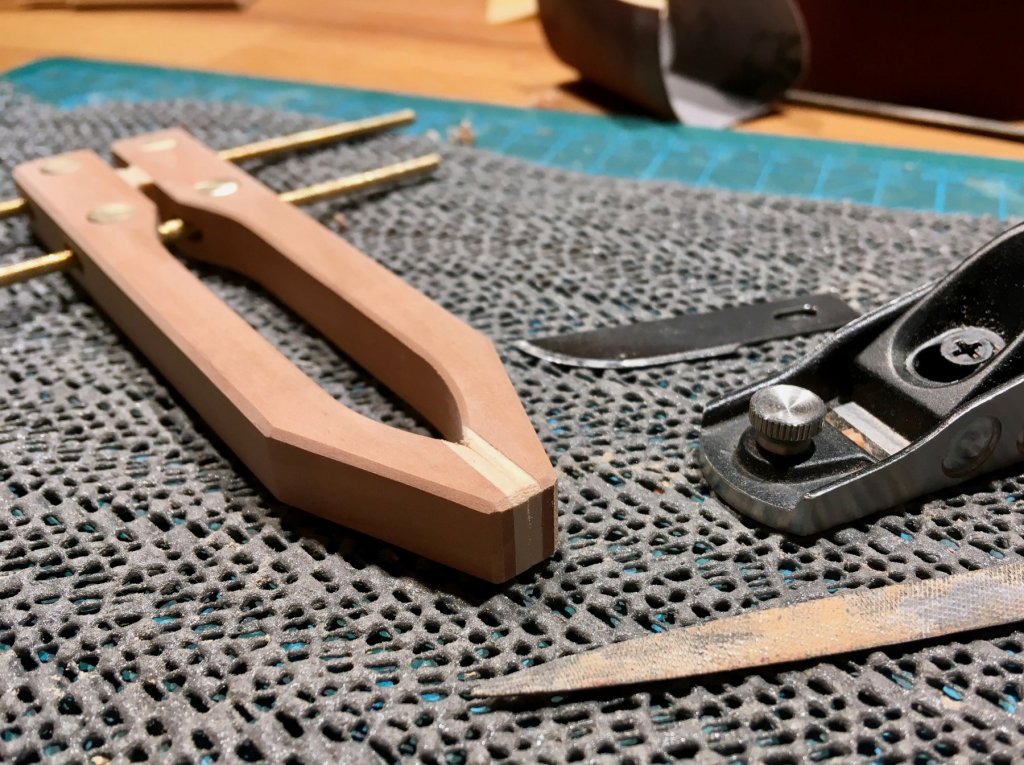
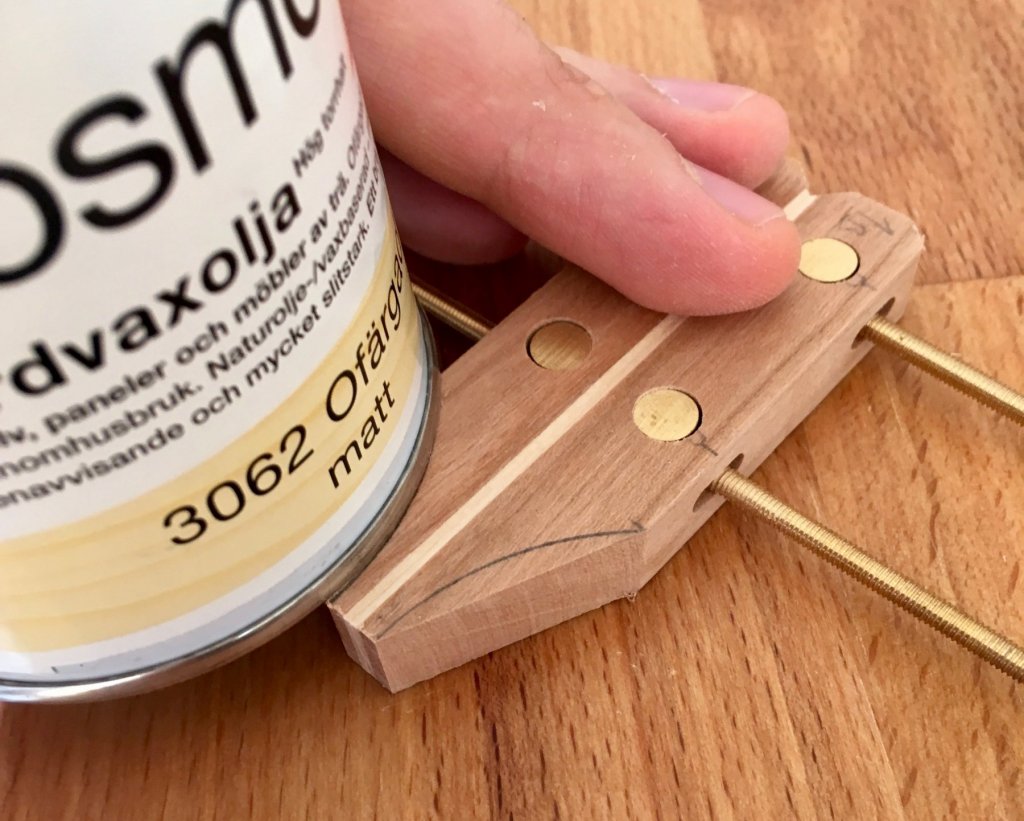
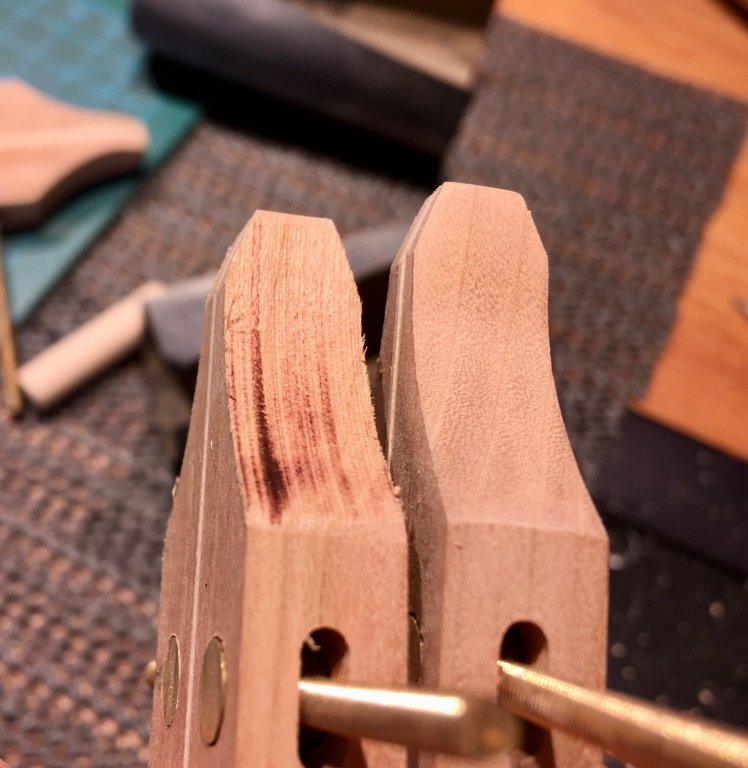
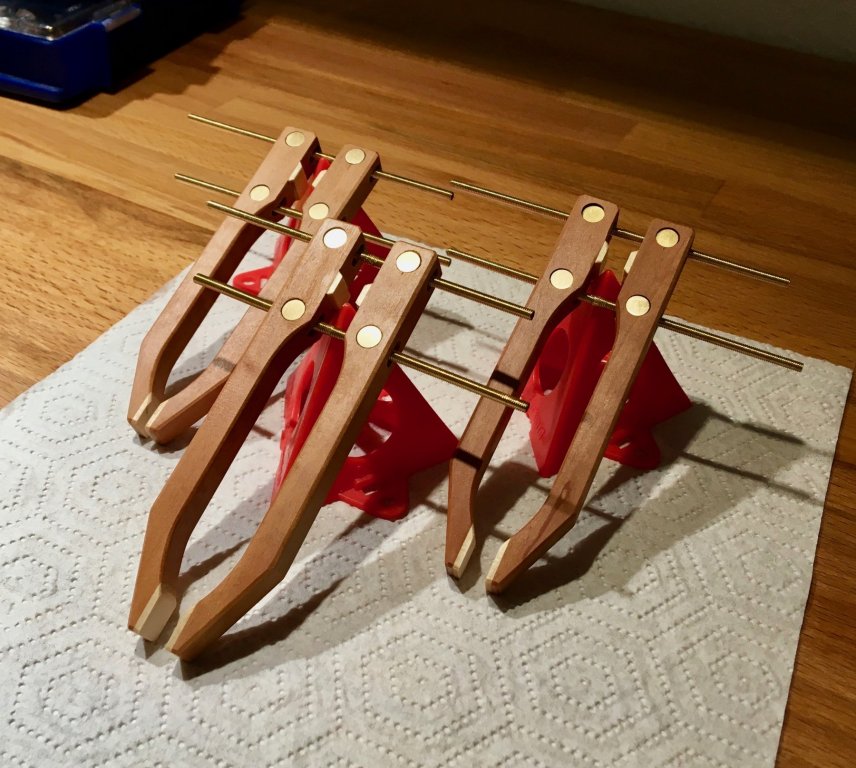
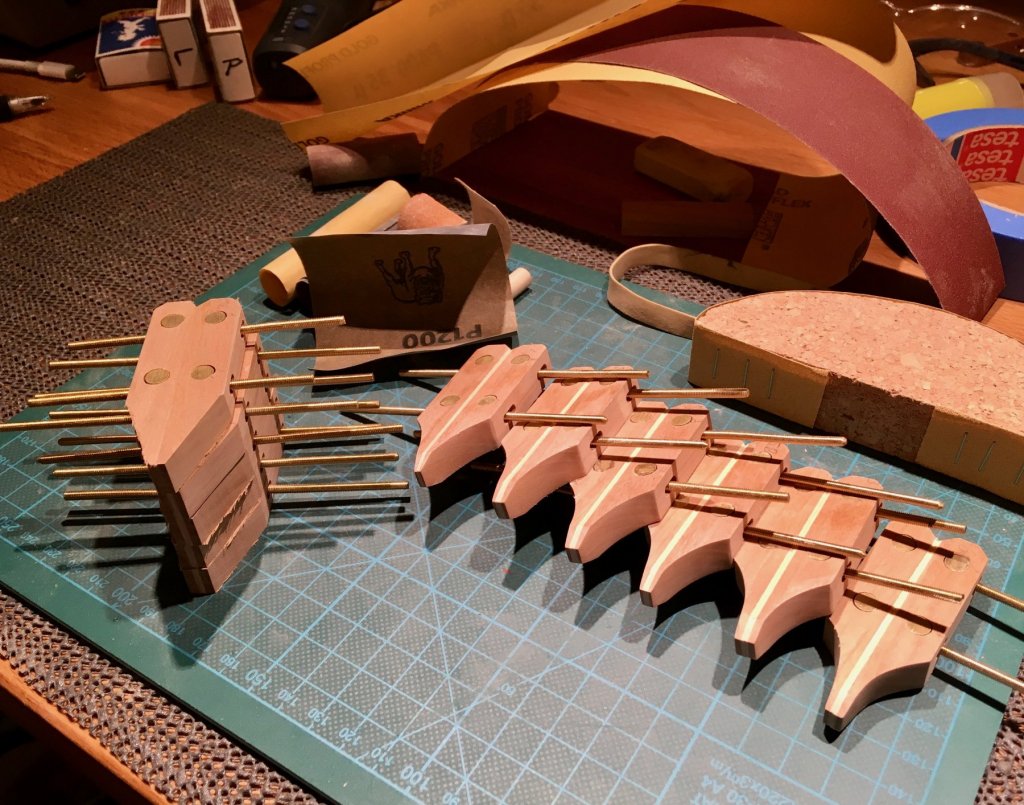
.thumb.jpg.3caf504008b48c7feb971bc38f59ee96.jpg)
